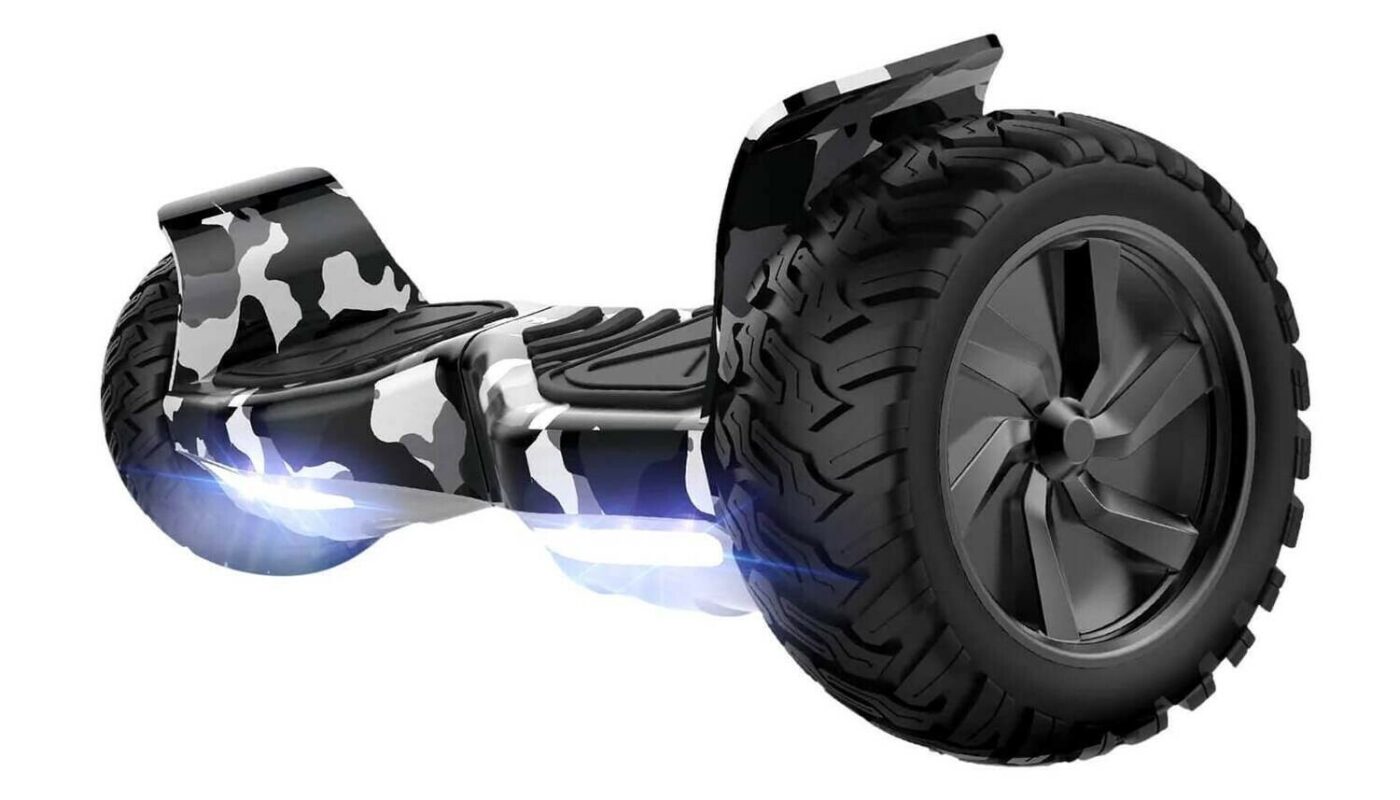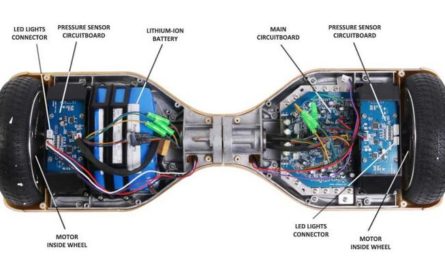In recent years, Segways have gained popularity as a convenient and eco-friendly means of personal transportation. These self-balancing devices offer an efficient and fun way to navigate urban environments. However, understanding how long a Segway battery lasts is crucial for maintenance and maximizing its value. This article will delve into the factors that affect Segway battery longevity.
Table of Contents
Types of Segway Batteries
Segways utilize different types of batteries to power their motors. The most common type used is lithium-ion batteries. These batteries are lightweight, have high energy density, and provide longer battery life compared to other types. They are also rechargeable, making them a popular choice for many Segway models.
Another type of battery occasionally used in Segways is the nickel-metal hydride (NiMH) battery. While they have a lower energy density and shorter lifespan compared to lithium-ion batteries, they still offer a viable option for certain models.
In the past, lead-acid batteries were commonly used, especially in older Segway models. However, these batteries are heavier, have a shorter lifespan, and require more maintenance compared to lithium-ion and NiMH batteries. As a result, they are less common in current Segway models.
How Segway Batteries Work
Segway batteries are responsible for storing electrical energy that powers the motor, enabling the device to move. Lithium-ion batteries, in particular, use a chemical reaction between lithium ions and a cathode to store and release energy.
This technology offers numerous advantages, including high energy density, lightweight construction, and a consistent power output.
The lithium-ion battery consists of a positive electrode (cathode), a negative electrode (anode), and a separator that prevents short circuits between the two electrodes.
When the battery is charged, lithium ions migrate from the cathode to the anode. During discharge, the ions move back to the cathode, generating an electric current that powers the Segway’s motor.
Factors Affecting Segway Battery Longevity
1. Usage Patterns
The way you use your Segway can have a significant impact on its battery life. Several usage patterns can affect battery drain:
Frequency of Use
Naturally, the more you use your Segway, the faster the battery will drain. If you rely on your Segway for daily commuting or extended trips, you may find yourself recharging it more frequently than someone who uses it sporadically.
Terrain Types
The terrain you ride on can also affect battery drain. Riding on hilly or rough terrains requires more power, putting additional strain on the battery. Consequently, you may experience shorter battery life when traversing challenging landscapes.
2. Charging Habits
Proper charging practices play a crucial role in prolonging the lifespan of your Segway battery. Consider the following charging habits:
Charge to Full Capacity
To optimize battery performance and longevity, it is essential to charge your Segway battery to its full capacity whenever possible. Partially charging the battery can negatively impact its overall performance and lifespan.
Avoid Overcharging
Overcharging a Segway battery can lead to battery degradation. Once the battery is fully charged, it is essential to disconnect the charger promptly. Leaving the battery connected to the charger for extended periods can reduce its overall lifespan.
Avoid Undercharging
Allowing your Segway battery to fully discharge before recharging can also impact its longevity. It is advisable to recharge your battery before it reaches critically low levels. Avoiding deep discharges can help maintain the overall health of the battery.
3. Maintenance and Storage
Proper maintenance and storage practices can significantly extend the life of your Segway battery:
Store in a Cool and Dry Place
Segway batteries are sensitive to temperature extremes. Storing your Segway in a cool and dry place helps maintain the battery’s optimal performance. Avoid exposing the battery to excessive heat, cold, or humidity.
Regularly Clean Battery Contacts
Dust, dirt, and debris can hinder the charging process and affect battery performance. Regularly cleaning the battery contacts with a dry cloth or brush helps ensure optimal charging efficiency.
Avoid Deep Discharges
Allowing your Segway battery to remain fully discharged for extended periods can lead to battery degradation. Regularly charge your Segway and avoid letting it discharge completely. Aim to keep the battery level above 20% whenever possible.
Average Lifespan of a Segway Battery
The average lifespan of a Segway battery varies based on several factors, including the model and the type of battery used. On average, a good-quality lithium-ion battery can last between 3 to 5 years with regular use.
However, it’s important to note that battery life can be affected by usage patterns, charging habits, and maintenance practices.
Nickel-metal hydride (NiMH) batteries, while less common in Segways, have a shorter lifespan compared to lithium-ion batteries. Depending on the specific model and usage, NiMH batteries typically last between 2 to 4 years.
Lead-acid batteries, which were more prevalent in earlier Segway models, generally have a shorter lifespan compared to lithium-ion and NiMH batteries. These batteries typically last between 1 to 3 years with regular use.
It is worth mentioning that these are average lifespan ranges, and individual results may vary depending on various factors. Proper maintenance and adherence to best practices can help maximize battery life.
Signs of Segway Battery Wear
1. Decreased Range
One of the first signs of a deteriorating battery is reduced travel distance. If you notice that your Segway cannot cover the same distance on a full charge as it used to, it may be time to consider battery replacement.
Over time, the capacity of a battery naturally diminishes, resulting in reduced range. Factors such as battery age, usage patterns, and external conditions can contribute to this decrease in range.
Keeping track of your Segway’s range and noting any significant reductions can help you gauge the battery’s wear.
2. Longer Charging Times
As batteries age, they may take longer to charge fully. If you find that your Segway battery consistently requires more time to reach a full charge, it could indicate wear and reduced capacity.
Longer charging times can be attributed to the natural degradation of the battery’s internal components. This is often caused by the accumulation of usage cycles and chemical reactions within the battery.
Monitoring the charging times and noting any substantial increases can provide insight into the battery’s condition.
3. Inconsistent Power Output
A worn-out battery may provide inconsistent power output, resulting in fluctuations during your ride. If you experience sudden drops in power or the Segway feels less responsive, it may be due to a deteriorating battery.
Inconsistent power output can occur when a battery is no longer able to sustain a steady flow of energy. This can manifest as power surges or dips during acceleration or while navigating challenging terrains. If you notice such irregularities, it is advisable to have your battery inspected and potentially replaced if necessary.
How to Maximize Your Segway’s Battery Life?
1. Best Charging Practices
Following the best charging practices can help maximize the lifespan of your Segway battery:
- Charge Fully: Always aim to charge your Segway battery to its full capacity. Partial charging can negatively affect the overall performance and lifespan of the battery.
- Avoid Extreme Temperatures: Extreme heat or cold can harm the battery’s performance and longevity. Charge and store your Segway in an environment with moderate temperatures to optimize its battery life.
- Avoid Overcharging: Overcharging a battery can lead to degradation and reduced battery life. Disconnect the charger as soon as the battery reaches full capacity to prevent overcharging.
- Regularly Charge: If you are not using your Segway regularly, it is still important to charge the battery regularly. Leaving the battery discharged for extended periods can lead to decreased performance and capacity.
2. Riding Techniques
Implementing efficient riding techniques can help conserve battery power and extend its life:
- Avoid Unnecessary Acceleration and Sudden Stops: Smooth, gradual acceleration and deceleration can help optimize battery usage. Avoid sudden bursts of speed or abrupt stops, as they require more energy.
- Maintain a Moderate and Steady Speed: Riding at a moderate and consistent speed can help conserve battery power. Avoid unnecessary bursts of speed or riding at maximum speed for extended periods to maximize battery efficiency.
- Utilize Downhill Slopes: When encountering downhill slopes, take advantage of gravity and reduce the workload on the battery by allowing the Segway to naturally coast or lightly apply the brakes. This technique can help conserve battery power.
3. Regular Maintenance Schedule
Regular maintenance is essential for prolonging the lifespan of your Segway battery. Consider the following maintenance tips:
- Clean Battery Contacts: Regularly clean the battery contacts to remove any dust, dirt, or debris that may hinder the charging process. Use a dry cloth or brush to gently clean the contacts.
- Inspect Battery for Signs of Damage: Routinely inspect the battery for any visible signs of damage, such as cracks, leaks, or corrosion. If you notice any abnormalities, it is recommended to have the battery checked by a professional.
- Consider Battery Conditioning: Some Segway models and battery systems offer conditioning features that help optimize battery performance. Check your Segway’s user manual or consult with the manufacturer for specific recommendations.
- Store in a Cool, Dry Place: When not in use, store your Segway and its battery in a cool, dry place. Extreme temperatures, especially heat, can accelerate battery degradation. Avoid exposing the battery to direct sunlight or storing it in a humid environment.
By adhering to these maintenance practices, you can prolong the overall health and lifespan of your Segway battery.
When to Consider Replacement?
While Segway batteries are designed to last for a significant period, there comes a time when replacement becomes necessary. Here are some signs to look out for:
- Significant Reduction in Range: If your Segway battery can no longer cover the distance it once did, even after a full charge, it may be a clear indication that the battery needs replacement.
- Drastically Increased Charging Time: If the battery consistently requires significantly more time to charge fully, it may be an indication of wear and diminished capacity.
- Inconsistent Power Output: If you experience sudden drops in power or noticeable fluctuations during your rides, it may indicate that the battery is no longer able to sustain a consistent power output.
Troubleshooting Common Battery Issues
1. Unable to Charge
If you encounter difficulties in charging your Segway battery, the following troubleshooting steps may help:
- Ensure Proper Connection: Verify that the charger is correctly connected to the battery terminals. Loose or improperly connected cables can prevent the battery from charging.
- Check for Visible Damage: Inspect the battery and charger for any visible signs of damage, such as frayed cables or bent connectors. Damage to the charging equipment can prevent proper charging.
- Try Different Power Outlet: Attempt to charge the battery using a different power outlet. Sometimes, an issue with the power source can interfere with the charging process.
If the problem persists, it is advisable to consult a professional or contact the Segway manufacturer’s customer support for further assistance.
2. Battery Dies Quickly
If you find that your Segway battery is discharging rapidly during use, consider the following solutions:
- Check for Power-Consuming Accessories: Some Segway models may have additional features or accessories that consume more power. Ensure that all unnecessary accessories are disconnected or turned off to minimize power drain.
- Inspect the Battery: Examine the battery for any visible signs of damage, leaks, or corrosion. If you notice any abnormalities, it may be an indication that the battery needs replacement or professional attention.
- Seek Professional Diagnosis: If the battery continues to discharge quickly despite troubleshooting efforts, it may be necessary to consult a professional technician for diagnosis and potential battery replacement.
FAQ Section
1. How long does a Segway battery last on a single charge?
The battery life of a Segway can vary depending on factors such as model, battery type, terrain, and usage patterns. Typically, a Segway battery can last anywhere between 10 to 25 miles on a single charge.
It’s important to note that variables such as riding conditions, user weight, and speed can impact the actual range.
2. Can I replace the battery myself?
While it is possible to replace the battery yourself, it is recommended to seek professional assistance to ensure proper installation.
Segway batteries can be complex, and improper replacement can lead to damage or safety hazards. It is best to consult with a Segway dealer or authorized service center for guidance.
3. Are Segway batteries recyclable?
Yes, Segway batteries are recyclable. It is crucial to dispose of them responsibly at designated recycling centers to minimize environmental impact. Contact your local waste management or recycling facility for specific instructions on battery disposal.
4. How much does a Segway battery replacement cost?
The cost of replacing a Segway battery can vary depending on factors such as the model, battery type, and where you purchase it. Lithium-ion batteries, being the most common, generally have a higher price tag compared to other battery types.
It is advisable to consult with a Segway dealer or authorized service center for accurate pricing information based on your specific Segway model.
Conclusion
Understanding the lifespan of your Segway battery is vital for maintaining optimal performance and maximizing the value of your Segway investment.
Remember to charge your Segway battery fully, avoid overcharging or undercharging, and implement efficient riding techniques to conserve battery power.










